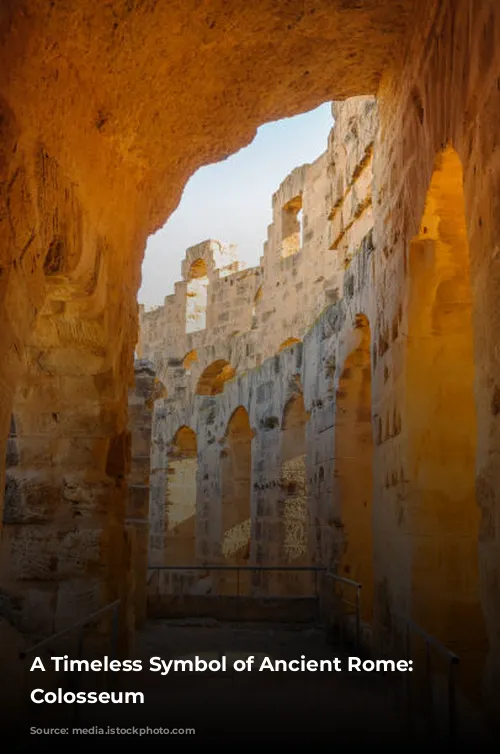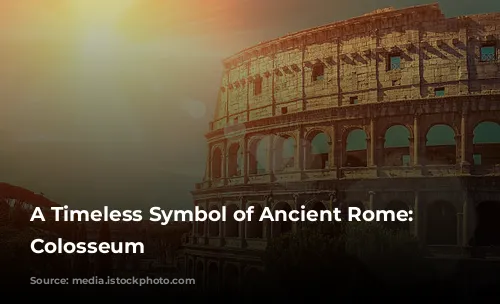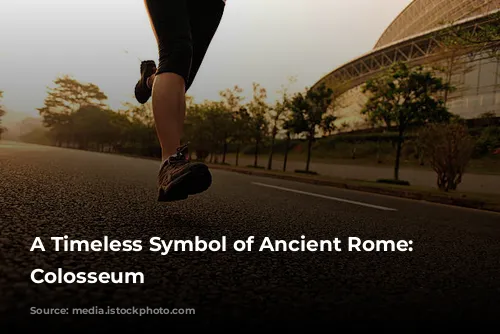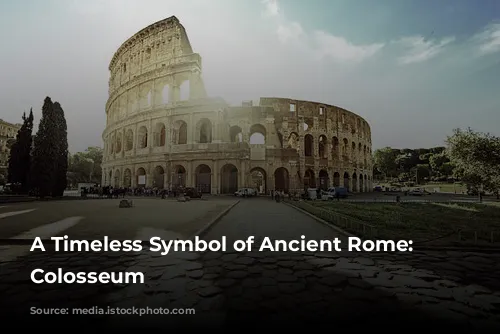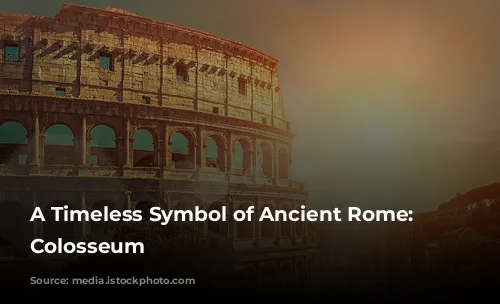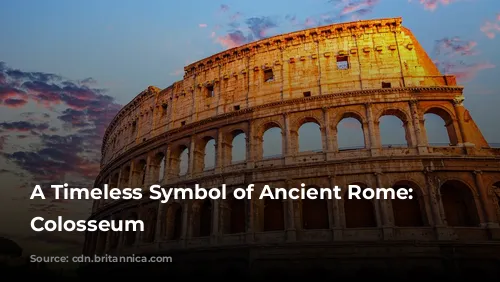Standing as a powerful testament to ancient Rome’s architectural and engineering mastery, the Colosseum is one of the few mostly intact structures from the Roman Empire. This iconic landmark continues to draw tourists from around the world, generating significant income for the Italian government. In 2018, the Colosseum, Roman Forum, and Palatine Hill together garnered over €53.8 million in revenue, making it Italy’s top tourist attraction.
This section introduces the Colosseum, highlighting its significance as a symbol of ancient Rome and its contribution to tourism.
From Arena to Fortress and Quarry: The Colosseum’s Transformation
Sadly, the Colosseum fell into a state of disrepair after the fall of the Western Roman Empire. In the 12th century, the Frangipane and Annibaldi families seized the arena, transforming it into their fortress. The late 15th century saw Pope Alexander VI permit the Colosseum to be used as a quarry. It was only after over a thousand years of neglect that the Italian government initiated state-funded restoration efforts in the 1990s.
This section details the Colosseum’s evolution from a magnificent arena to a fortress and quarry, highlighting the years of neglect before restoration efforts began.
A Monument to Imperial Might and Entertainment
The Colosseum’s construction was part of a grand imperial project to revitalize Rome after the tumultuous year of the four emperors in 69 CE. Like other amphitheatres, Emperor Vespasian intended the Colosseum as a venue for grand entertainment, hosting gladiatorial contests, animal hunts, and even mock naval battles.
This section explains the Colosseum’s construction as a project designed to revitalize Rome and its intended purpose as an entertainment venue.

From Construction to Dedication: The Colosseum Takes Shape
Construction began under Emperor Vespasian between 70 and 72 CE. The completed structure was dedicated in 80 CE by Titus, Vespasian’s son and successor. Emperor Domitian added the fourth story in 82 CE. It’s important to note that the Colosseum was funded by the plunder from Titus’s conquest of Jerusalem in 70 CE and built using enslaved Jews from Judaea.
This section details the construction timeline of the Colosseum, highlighting its dedication and the use of enslaved Jewish labor.
An Architectural Marvel of the Roman Empire: The Colosseum’s Design
The Colosseum, also known as the Flavian Amphitheatre, is an elliptical structure built of stone, concrete, and tuff. This impressive monument stands four stories tall, measuring 620 by 513 feet, with the capacity to hold up to 50,000 spectators. The Colosseum is renowned for its use in gladiatorial combat.
This section describes the Colosseum’s design, highlighting its materials, dimensions, and famous use.
A Symbol of Power and Public Entertainment
The Colosseum was constructed just east of the Palatine Hill, on the site of Nero’s Golden House. The artificial lake that was the center of Nero’s palace complex was drained, and the Colosseum was built in its place. This decision was as much symbolic as it was practical. Vespasian, whose path to the throne had humble beginnings, chose to replace the tyrannical emperor’s private lake with a public amphitheatre that could host tens of thousands of Romans.
This section provides context for the Colosseum’s location, emphasizing the symbolic significance of its placement over Nero’s private lake.

An Architectural Masterpiece: The Colosseum’s Construction
The Colosseum was formally dedicated in 80 CE by Titus in a ceremony that included 100 days of games. Domitian completed the work by adding the uppermost story in 82 CE. Unlike earlier amphitheatres, which were often built into hillsides for extra support, the Colosseum is a freestanding structure of stone and concrete. It utilizes a complex system of barrel vaults and groin vaults and measures 620 by 513 feet overall. Three of the arena’s stories are encircled by arcades framed by engaged columns in the Doric, Ionic, and Corinthian orders, creating a rising arrangement of columns that became the basis of the Renaissance codification known as the assemblage of orders. The main structure and facade are made of travertine, the secondary walls are volcanic tufa, and the inner bowl and arcade vaults are concrete.
This section delves into the construction of the Colosseum, emphasizing its unique design and architectural features.
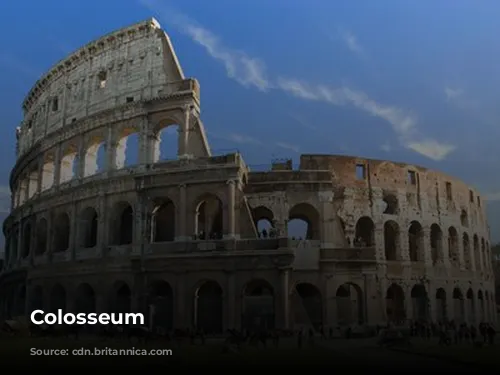
A Spectacle for the Masses: The Colosseum’s Entertainment
The amphitheatre could accommodate around 50,000 spectators who were shielded from the sun by a massive retractable velarium (awning). Supporting masts extended from corbels built into the Colosseum’s top story, and hundreds of Roman sailors were required to operate the rigging that extended and retracted the velarium. The Colosseum was the stage for countless gladiatorial combats, contests between men and animals, and even mock naval battles. However, there is no definitive proof that the arena was the site of early Christian martyrdom.
This section describes the Colosseum’s functionality as an entertainment venue, emphasizing its capacity, the use of a retractable awning, and the types of spectacles it hosted.
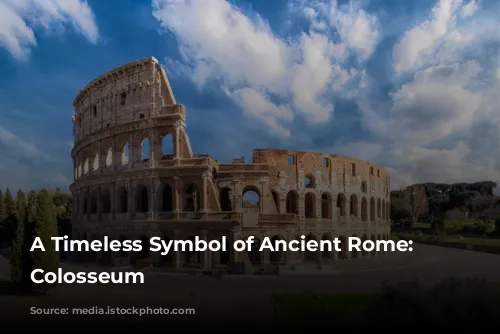
From Glory to Ruin and Restoration: The Colosseum’s Journey
During medieval times, the Colosseum was repurposed as a church and later as a fortress by the Frangipane and Annibaldi families. It suffered damage from lightning, earthquakes, vandalism, and pollution. All the marble seats and decorative materials were stripped away, turning the site into a quarry for over a thousand years. Serious preservation efforts began in the 19th century, with notable contributions by Pius VIII, and a restoration project was undertaken in the 1990s. The Colosseum has long been one of Rome’s major tourist attractions, attracting close to seven million visitors annually. Regularly changing exhibitions related to the culture of ancient Rome are also held within its walls.
This section covers the Colosseum’s transition from a monument to a quarry, the beginning of preservation efforts, and its current status as a major tourist attraction.
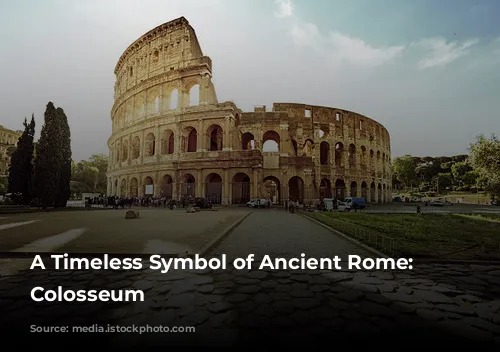
A Lasting Legacy: The Colosseum’s Enduring Power
The Colosseum stands as a powerful testament to ancient Rome’s architectural and engineering prowess and its commitment to public entertainment. Despite facing neglect and destruction, it has endured through the centuries, captivating visitors with its grandeur and offering a glimpse into the heart of the Roman Empire. As a major tourist destination, the Colosseum continues to attract millions of people who come to marvel at this extraordinary monument, ensuring its legacy for generations to come.
This concluding section summarizes the Colosseum’s significance as a symbol of ancient Rome, its resilience in the face of destruction, and its continued importance as a tourist attraction.
